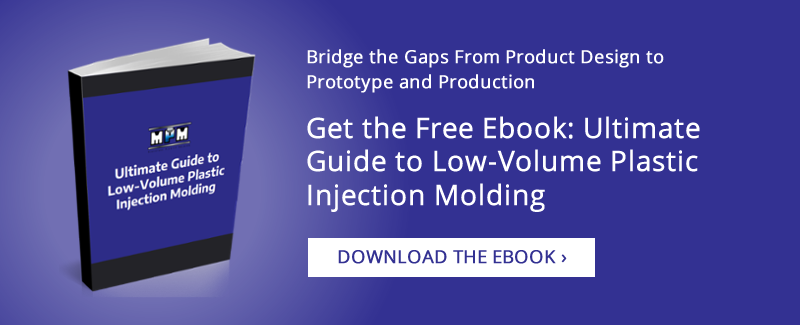We all face the challenge of reducing manufacturing or product costs. One key to success is having the right tools. You could use a sledge hammer to hang a picture, but a tack hammer is no doubt the better choice. When developing plastic parts and moving from design to a working model prototype, you need the manufacturer’s version of a tack hammer for the job. Using low volume injection molding (LVIM) can significantly reduce injection molding costs in a variety of ways.
How to Reduce Injection Molding Costs with LVIM
Capital Investment
The Low Volume Injection Molding machine is a modest capital investment. Typically these machines utilize either a plunger or a reciprocating screw design. The plunger style can offer lowest initial cost while the reciprocating screw style produces parts that more closely mimic your high-volume production part’s appearance and physical characteristics. By utilizing these relatively simple machines, you can begin production sooner and reduce injection molding costs from the start.
Perfecting the Multi-Cavity Mold Affordably
With the LVIM machine you can develop a single cavity mold for the production quality prototype. The mold cavity can start with an easier material to machine, such as aluminum, which reduces machining costs. To get to the final prototype cavity, there will likely be adjustments for shrinkage, ejection draft, gate design and venting. Having this information will be useful in minimizing the cost of your multi-cavity mold, and reducing injection molding costs in general. The single cavity mold in a softer metal typically will reduce “working prototype” development time from months to weeks; helping you win the race to market.
Test Materials
The LVIM machine shooting one cavity requires less material, this means that you can test material blends cheaper and easier, and overall reduce prototyping costs. The LVIM machine typically operates with a manual or semi-automatic cycle, meaning that switching from molding to material purging is quick, giving you labor savings as you find the right material mix. The Low Volume Injection Molding Machine is simpler to setup and operate as well, which reduces operator training costs.
Reducing Risks
Reducing risk is critical to effective management. The LVIM machine minimizes risk because, once the final prototype mold is established, you now have a mold to provide “backup” production should anything happen to your multi-cavity machine or contracted molded parts supplier.
Optimizing Capabilities
Additional cost saving is achieved by assuring your in-house multi-cavity machine is always running high volume production parts and not being under-utilized for prototype or low volume part production. The Low Volume Injection Molding machine is also useful for training new employees before they move to running the larger, automatic injection machines.
Low volume machines are a solid investment because they serve multiple roles, all of which help develop products, reduce risk and enhance employee expertise. All of this translates into cost savings, whether you are releasing a product for the first time, making your first production run, or expanding production.
